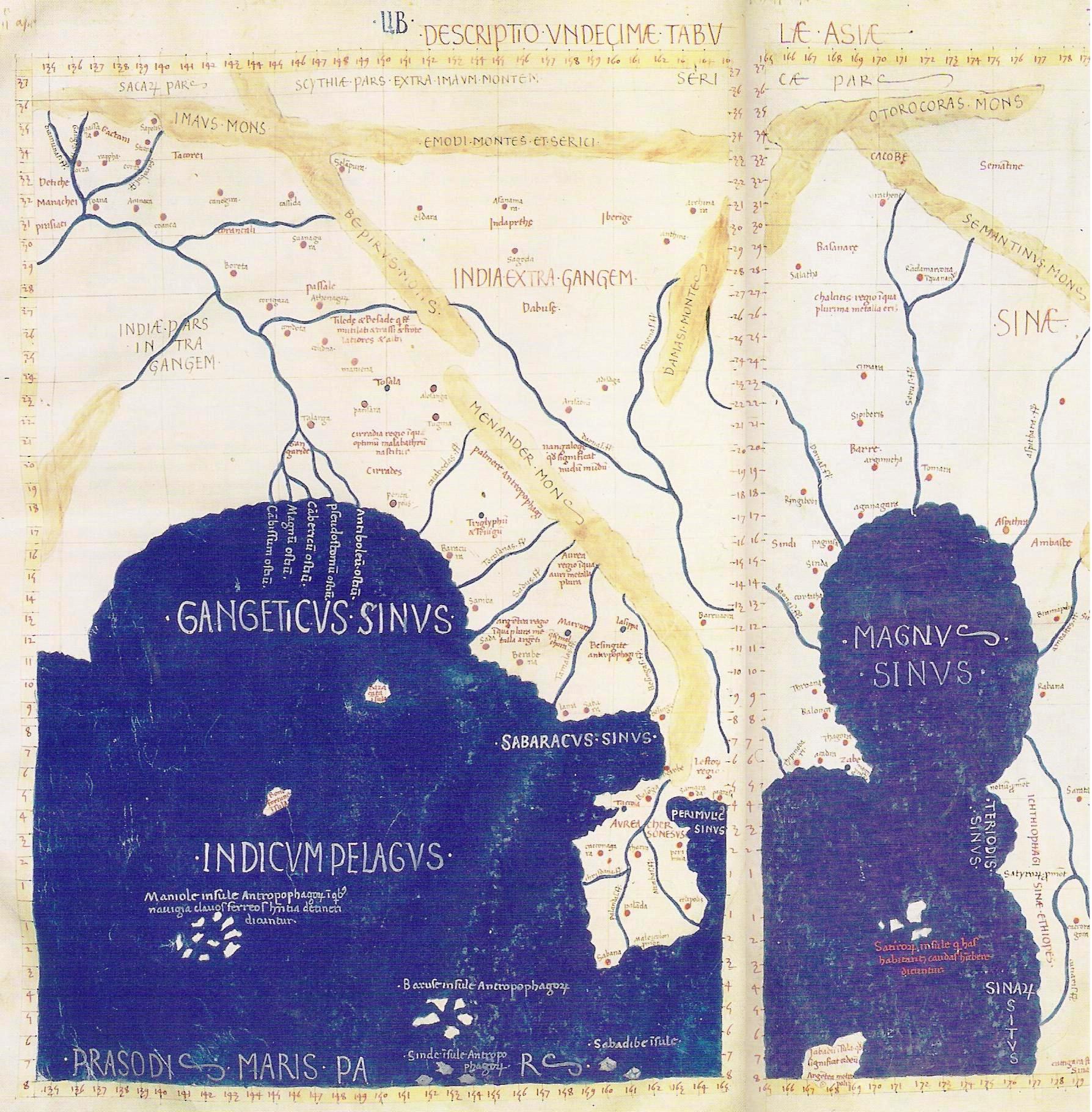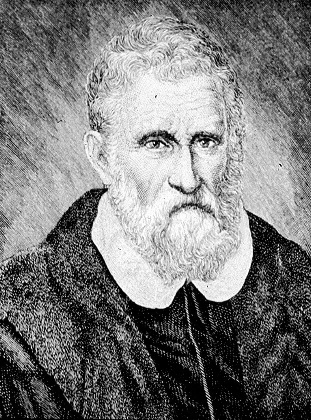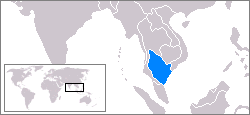|
Kattigara
Cattigara is the name of a major port city located on the Magnus Sinus described by various antiquity sources. Modern scholars have linked Cattigara to the archaeological site of Óc Eo in present-day Vietnam. Ptolemy's description Cattigara was the name given by the 2nd-century Alexandrian geographer Claudius Ptolemy to the land on the easternmost shore of the Indian Sea at (due to a scribal error) 8½° south of the Equator. The name "Cattigara" was probably derived from the Sanskrit ''Kirti-nagara'' कीर्ति- नगर "Renowned City" or ''Kotti-nagara'' कोटि-नगर "Strong City". Scholarship has determined that Ptolemy's Cattigara was at 8½° north of the Equator and was the forerunner of Saigon as the main port and entrepot at the mouth of the Mekong. John Caverhill deduced in 1767 that Cattigara was the Mekong Delta port Banteaymeas (now Hà Tiên), not far from Óc Eo. The plea in 1979 by Jeremy H.C.S. Davidson for "a thorough study of Hà-tiên ... [...More Info...] [...Related Items...] OR: [Wikipedia] [Google] [Baidu] |
Óc Eo
Óc Eo (Vietnamese) is an archaeological site in modern-day Óc Eo commune of Thoại Sơn District in An Giang Province of southern Vietnam. Located in the Mekong Delta, Óc Eo was a busy port of the kingdom of Funan between the 2nd century BC and 12th century AD and it may have been the port known to the Greeks and Romans as Cattigara. Scholars use the term Óc Eo culture to refer to the archaeological culture of the Mekong Delta that is typified by the artifacts recovered at Óc Eo through archaeological investigation. Archaeological site Excavation at Óc Eo began on February 10, 1942, after French archaeologists had discovered the site through the use of aerial photography. The first excavations were led by Louis Malleret, who identified the site as the place called Cattigara by Roman merchants in the first centuries of the Roman Empire. The site covers 450 hectares. Óc Eo is situated within a network of ancient canals that crisscross the low flatland of the Mekong Delt ... [...More Info...] [...Related Items...] OR: [Wikipedia] [Google] [Baidu] |
Fu-nan
Funan (; km, ហ៊្វូណន, ; vi, Phù Nam, Chữ Hán: ) was the name given by Chinese cartographers, geographers and writers to an ancient Indianized state—or, rather a loose network of states ''(Mandala)''—located in mainland Southeast Asia centered on the Mekong Delta that existed from the first to sixth century CE. The name is found in Chinese historical texts describing the kingdom, and the most extensive descriptions are largely based on the report of two Chinese diplomats, Kang Tai and Zhu Ying, representing the Eastern Wu dynasty who sojourned in Funan in the mid-3rd century CE.Higham, C., 2001, The Civilization of Angkor, London: Weidenfeld & Nicolson, Funan is known in the modern languages of the region as ''Vnum'' (Old Khmer: ), Nokor Phnom ( km, នគរភ្នំ, , ), ( th, ฟูนาน), and (Vietnamese). However, the name ''Funan'' is not found in any texts of local origin from the period, and it is not known what name the people o ... [...More Info...] [...Related Items...] OR: [Wikipedia] [Google] [Baidu] |
Magnus Sinus
The Magnus Sinus or Sinus Magnus (Latin; grc-gre, ὀ Μέγας Κόλπος, ''o Mégas Kólpos''), also anglicized as the was the form of the Gulf of Thailand and South China Sea known to Greek, Roman, Arab, Persian, and Renaissance cartographers before the Age of Discovery. It was then briefly conflated with the Pacific Ocean before disappearing from maps. History The gulf and its major port of Cattigara had supposedly been reached by a 1st-century Greek trader named Alexander, who returned safely and left a periplus of his voyage. His account that Cattigara was "some days" sail from Zaba was taken by Marinus of Tyre to mean "numberless" days and by Ptolemy to mean "a few". Both Alexander and Marinus's works have been lost, but were claimed as authorities by Ptolemy in his ''Geography''. Ptolemy (and presumably Marinus before him) followed Hipparchus in making the Indian Ocean a landlocked sea, placing Cattigara on its unknown eastern shoreline. The expanse formed betw ... [...More Info...] [...Related Items...] OR: [Wikipedia] [Google] [Baidu] |
Golden Chersonese
The Golden Chersonese or Golden Khersonese ( grc, Χρυσῆ Χερσόνησος, ''Chrysḗ Chersónēsos''; la, Chersonesus Aurea), meaning the Golden Peninsula, was the name used for the Malay Peninsula by Greek and Roman geographers in classical antiquity, most famously in Claudius Ptolemy's 2nd-century ''Geography''. Name The earliest references to a fabulous land of gold that could be interpreted as places in South East Asia may be found in Indian literature. In ''Ramayana'', there are mentions of ''Suvarnabhumi'' (Land of Gold) and ''Suvarnadvipa'' (the Golden Island or Peninsula, where ''dvipa'' might refer to either a peninsula or an island) Greek knowledge of lands further to their east improved after the conquests of Alexander the Great, but specific references to places in South East Asia did not appear until after the rise of the Roman Empire. Greek and Roman geographers Eratosthenes, Dionysius Periegetes, and Pomponius Mela had written about a Golden Isle (''Khry ... [...More Info...] [...Related Items...] OR: [Wikipedia] [Google] [Baidu] |
Sinus Magnus
The Magnus Sinus or Sinus Magnus (Latin; grc-gre, ὀ Μέγας Κόλπος, ''o Mégas Kólpos''), also anglicization of names, anglicized as the was the form of the Gulf of Thailand and South China Sea known to Greek geographers, Greek, Roman geographers, Roman, medieval Arab geographers, Arab, medieval Persian geographers, Persian, and Renaissance cartographers before the Age of Discovery. It was then briefly conflated with the Pacific Ocean before disappearing from maps. History The gulf and its major port of Cattigara had supposedly been reached by a 1st-century Ancient Greeks, Greek trader named Alexander, who returned safely and left a periplus of his voyage. His account that Cattigara was "some days" sail from Zaba (Ptolemy), Zaba was taken by Marinus of Tyre, Marinus of Tyre (city), Tyre to mean "numberless" days and by Ptolemy to mean "a few". Both Alexander and Marinus's works have been lost, but were claimed as authorities by Ptolemy in Ptolemy's Geography, his ''G ... [...More Info...] [...Related Items...] OR: [Wikipedia] [Google] [Baidu] |
Marco Polo
Marco Polo (, , ; 8 January 1324) was a Venetian merchant, explorer and writer who travelled through Asia along the Silk Road between 1271 and 1295. His travels are recorded in ''The Travels of Marco Polo'' (also known as ''Book of the Marvels of the World '' and ''Il Milione'', ), a book that described to Europeans the then mysterious culture and inner workings of the Eastern world, including the wealth and great size of the Mongol Empire and China in the Yuan Dynasty, giving their first comprehensive look into China, Persia, India, Japan and other Asian cities and countries. Born in Venice, Marco learned the mercantile trade from his father and his uncle, Niccolò and Maffeo, who travelled through Asia and met Kublai Khan. In 1269, they returned to Venice to meet Marco for the first time. The three of them embarked on an epic journey to Asia, exploring many places along the Silk Road until they reached Cathay (China). They were received by the royal court of Kublai Khan, ... [...More Info...] [...Related Items...] OR: [Wikipedia] [Google] [Baidu] |
Champa
Champa (Cham: ꨌꩌꨛꨩ; km, ចាម្ប៉ា; vi, Chiêm Thành or ) were a collection of independent Cham polities that extended across the coast of what is contemporary central and southern Vietnam from approximately the 2nd century AD until 1832, when it was annexed by the Vietnamese Empire under its emperor Minh Mạng. The kingdom was known variously as ''Nagaracampa'' ( sa, नगरचम्पः), ''Champa'' (ꨌꩌꨛꨩ) in modern Cham, and ''Châmpa'' () in the Khmer inscriptions, ''Chiêm Thành'' in Vietnamese and ''Zhànchéng'' (Mandarin: 占城) in Chinese records. The Kingdoms of Champa and the Chams contribute profound and direct impacts to the history of Vietnam, Southeast Asia, as well as their present day. Early Champa, evolved from local seafaring Austronesian Chamic Sa Huỳnh culture off the coast of modern-day Vietnam. The emergence of Champa at the late 2nd century AD shows testimony of early Southeast Asian statecrafting and crucial ... [...More Info...] [...Related Items...] OR: [Wikipedia] [Google] [Baidu] |
Christopher Columbus
Christopher Columbus * lij, Cristoffa C(or)ombo * es, link=no, Cristóbal Colón * pt, Cristóvão Colombo * ca, Cristòfor (or ) * la, Christophorus Columbus. (; born between 25 August and 31 October 1451, died 20 May 1506) was an Italian explorer and navigator who completed Voyages of Christopher Columbus, four voyages across the Atlantic Ocean sponsored by the Catholic Monarchs of Spain, opening the way for the widespread European Age of Discovery, exploration and colonization of the Americas. His expeditions were the first known European contact with the Caribbean, Central America, and South America. The name ''Christopher Columbus'' is the anglicisation of the Latin . Scholars generally agree that Columbus was born in the Republic of Genoa and spoke a dialect of Ligurian (Romance language), Ligurian as his first language. He went to sea at a young age and travelled widely, as far north as the British Isles and as far south as what is now Ghana. He married Port ... [...More Info...] [...Related Items...] OR: [Wikipedia] [Google] [Baidu] |
Gulf Of Thailand
The Gulf of Thailand, also known as the Gulf of Siam, is a shallow inlet in the southwestern South China Sea, bounded between the southwestern shores of the Indochinese Peninsula and the northern half of the Malay Peninsula. It is around in length and up to in width, and has a surface area of . The gulf is surrounded on the north, west and southwest by the coastlines of Thailand (hence the name), on the northeast by Cambodia and the Mekong Delta region of Vietnam, and opens to the South China Sea in the southeast. Names The modern Thai name of the gulf is ''Ao Thai'' ( th, อ่าวไทย, , 'Thai Gulf') and "Gulf of Thailand" has been adopted as the official name of the body by the International Hydrographic Organization. Its name in Malay is he "Gulf of Siam", ''Teluk Siam'', and in km, ឈូងសមុទ្រសៀម'', Chhoung Samut Siem''. In Thai, the gulf is historically known as ''Ao Sayam'' ( th, อ่าวสยาม). In Vietnamese it is known a ... [...More Info...] [...Related Items...] OR: [Wikipedia] [Google] [Baidu] |
Malay Peninsula
The Malay Peninsula (Malay: ''Semenanjung Tanah Melayu'') is a peninsula in Mainland Southeast Asia. The landmass runs approximately north–south, and at its terminus, it is the southernmost point of the Asian continental mainland. The area contains Peninsular Malaysia, Southern Thailand, and the southernmost tip of Myanmar (Kawthaung). The island country of Singapore also has historical and cultural ties with the region. The indigenous people of the peninsula are the Malays, an Austronesian people. The Titiwangsa Mountains are part of the Tenasserim Hills system and form the backbone of the peninsula and the southernmost section of the central cordillera, which runs from Tibet through the Kra Isthmus, the peninsula's narrowest point, into the Malay Peninsula. The Strait of Malacca separates the Malay Peninsula from the Indonesian island of Sumatra, and the south coast is separated from the island of Singapore by the Straits of Johor. Etymology The Malay term ''Tanah Me ... [...More Info...] [...Related Items...] OR: [Wikipedia] [Google] [Baidu] |
Atlantic Ocean
The Atlantic Ocean is the second-largest of the world's five oceans, with an area of about . It covers approximately 20% of Earth's surface and about 29% of its water surface area. It is known to separate the " Old World" of Africa, Europe and Asia from the "New World" of the Americas in the European perception of the World. The Atlantic Ocean occupies an elongated, S-shaped basin extending longitudinally between Europe and Africa to the east, and North and South America to the west. As one component of the interconnected World Ocean, it is connected in the north to the Arctic Ocean, to the Pacific Ocean in the southwest, the Indian Ocean in the southeast, and the Southern Ocean in the south (other definitions describe the Atlantic as extending southward to Antarctica). The Atlantic Ocean is divided in two parts, by the Equatorial Counter Current, with the North(ern) Atlantic Ocean and the South(ern) Atlantic Ocean split at about 8°N. Scientific explorations of the A ... [...More Info...] [...Related Items...] OR: [Wikipedia] [Google] [Baidu] |
Malacca
Malacca ( ms, Melaka) is a state in Malaysia located in the southern region of the Malay Peninsula, next to the Strait of Malacca. Its capital is Malacca City, dubbed the Historic City, which has been listed as a UNESCO World Heritage Site since 7 July 2008. The state is bordered by Negeri Sembilan to the north and west and Johor to the south. The exclave of Tanjung Tuan also borders Negeri Sembilan to the north. Its capital Malacca City is southeast of Malaysia's capital city Kuala Lumpur, northwest of Johor's largest city Johor Bahru and northwest of Johor's second largest city, Batu Pahat. Although it was the location of one of the earliest Malay sultanates, namely the Malacca Sultanate, the local monarchy was abolished when the Portuguese conquered it in 1511. The head of state is the ''Yang di-Pertua Negeri'' or Governor, rather than a Sultan. Malacca is noted for its unique history and it is one of the major tourist destinations in Malaysia. With a highly strategi ... [...More Info...] [...Related Items...] OR: [Wikipedia] [Google] [Baidu] |









